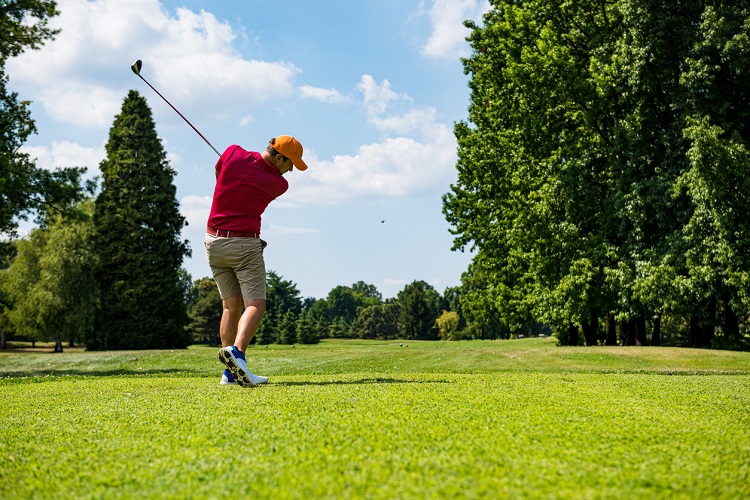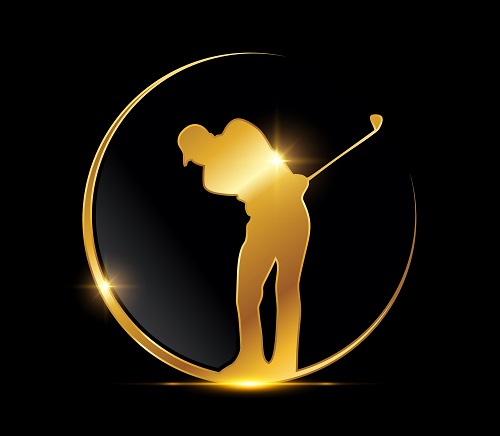How to Stop Hooking the Ball
Hitting the ball to the left repeatedly offers just as much penalty as golfers with a slice issue.
Although most coaches might seem encouraged that your problem is hitting to the left, failing to get the club square with your golf swing could create even bigger swing issues down the line.

For some golfers, hitting a hook or curve left and away from your intended target needs just a small tweak with either the grip, stance, or hand position at address.
For others, bigger problems are at hand with their hook, and these golfers need to target wholesale changes to stop hitting the golf ball left.
In this guide to stopping the hooked shot, I’ll answer some of the biggest questions golfers have about the hook and take you through a tried and true process I use with my students to neutralize their golf swing, correct your club path to get the club face square at impact to help you create more consistency.
How Can I Stop Hooking the Ball?
1. Neutralize Your Golf Grip
A huge reason why golfers hook shots come from a strong grip. When we talk about strong grips, the hands are located primarily to the right side of the club grip for right-handed golfers.
Here’s a quick check on whether you have a strong grip or not:
If the thumb on the bottom hand remains on the right side of the grip, chances are your grip is strong to quite strong. Also, if you can see the thumb of the top hand when you grip the golf club, then your grip is far too strong.
To fix your grip, the meaty part of the bottom hand should rotate to the left and rest atop the thumb of the top hand when gripping the club.
Also, the club grip should lay in the middle of the fingers of the left hand for right handers with the index finger anchoring the club at the bottom of the grip.
With this proper grip, the “V” made by your two hands should point toward the trail shoulder rather than directly to the center of your face.
Another quick rule of thumb for a neutral grip is you should only see the first two knuckles on your top hand at address. If you see more than the first two, then you still have a strong grip that will cause you to regularly hit a hook shot.
With a neutral grip, you don’t have to fight your hook swing to get the clubface square at impact. A natural swing, even with an inside-out club path should consistently bring the club back to square and pointed at your target when hitting balls to improve your iron game.
2. Square Your Stance
One of the biggest reasons why amateurs hook the golf ball is due to their upper body being closed at impact in relation to their lower body.
A closed stance promotes a severe inside-to-out club path causing the golfer to cut across the ball, forcing the dreaded right-to-left ball flight that we call a pull hook.
You can prevent a closed stance by placing a camera behind your golf swing and filming your body position at address. Most golfers have no idea that their lead shoulder is closed until you show them on the screen.
If the shoulders start and stay closed relative to the shot path, then your iron game will remain very inconsistent, and you’ll continue to see a hook shot that goes left.
By keeping the stance neutral and square, you can rotate freely in the golf swing, helping you fix the closed clubface before it gets to the target area of the ball.

PRO TIP
If you are struggling to see if your stance remains square, grab a couple of alignment sticks. Place one at your feet and another straight down the target line, about 12-18 inches in front of the ball, to help you see that your clubface is closed relative to the finishing position at impact.
Remember, you want the club’s leading edge to be perpendicular to the golf ball at impact to prevent a hook and send a shot down your target line.
When taking practice swings for right-handers, pay attention to the placement of your hips and right foot, or trail foot, in relation to your right leg and how you rotate through the swing.
If anything gets out of sync, say your hips aren’t firing through the impact, you could be creating that closed clubface by trying to catch up with your arms and hands.
Filming yourself as you swing the club is a great way to learn your body’s movement. Even without a golf ball in front of you, attempting to swing the club as if you are aiming at a specific target can help you see why your shots are starting left.
3. Rotate Your Body Correctly on the Downswing
One of the biggest mistakes I see all amateurs make, including my students, comes from a stiff body while they hit balls.
If you aren’t making a complete turn on the backswing with your arms, shoulders, and back then you are setting yourself up for the dreaded hand flip in hopes of a square clubface.
The same holds true for the downswing. The hips are everything on the downswing, and if they stay locked or stiff as you bring the club from the left along your intended club path, then you could create the hook swing shape that sends the ball high and to the left.
The simple fix for your game regarding rotation is to imagine that we want the head to remain relatively calm during the swing, and we want to rotate back and through around that axis point.
As I’ve said before, you are aiming for consistency, not eye-popping distance numbers with every swing, especially when it comes to your irons. So your body must stay relatively focused and mannered as you hit a golf shot to prevent a hook.
By executing this rotation, you keep your club path relatively neutral along your target line, preventing the ugly hooked shot.
Why Does My Ball Keep Hooking?
You might be wondering why you have developed the common hook.
One of the big reasons, if you are a right-handed golfer, is due to the right hand. If you have a weak grip, then your right hand has to flip the clubface closed at impact in an attempt to square the face.
In this drill, I’ve set out a practice drill to help you stop flipping your hands with some simple tips that will have you hitting balls at your target line in very little time.
Drill: Eliminating the Dreaded Hand Flip
One of the major ways that golfers hit a hook shot from the tee box or fairway comes from over rotation in the swing. Golfers create a pull hook by over rotation and then try to flip their hands when bringing the club to the impact position, hoping to create a square face.
These movements need so many things to go right for the golfer to consistently create straight ball flight. Usually, the golfer can’t sync the hands or the body stalls when rotating, and the club travels erratically through the impact zone.
To fix that flipping, you want to neutralize your follow through. A lot of golfers that hit hooking shots tend to finish their shot with their body falling to the right, so you need to practice a move that will keep you in balance along your target line.
For this drill, you’ll need one alignment stick placed about 18 inches in front of the golf ball. You’ll want to hit half to three-quarter shots with an emphasis on extending the follow through down along the direction of the alignment stick.
By working on keeping your club target line neutral, you force your body to stay balanced along the proper swing plane, helping you maintain a square clubface at impact.
After you begin to feel comfortable with the balanced finish when hitting golf balls at half speed, start hitting full shots with your favorite club.
If your timing gets out of sync again and the hook reappears, just go back and do this drill to groove your inside-to-out swing path with an extended finish.
Why Can’t I Stop Hooking the Ball?
If you find that after all of these tips you can’t stop hooking the golf ball, then you need a hard reset for your swing.
My suggestion is to start at the beginning and target only on your stance and body position first before moving to other areas of your posture.
Here are a few questions to answer yourself when dealing with a golf hook. If you answer no to any of these questions below, you need to slow down and start working through the proper fundamentals in this article to balance your body and prevent the swing flaw that creates a hook.
Five Questions to Ask Yourself When You Continue to Hook Left
1. Are your feet aligned directly underneath your shoulders and not too wide?
2. Look at your arms. Are they too far from the golf ball, forcing you to reach at impact with a closed face that causes a hook?
3. Are you flexing your right knee on the backswing to promote proper rotation?
4. Is your rotation also working around your head, or is everything shifting toward the lead shoulder at impact?
5. What is your club path? Do you bring the club from the inside or from the outside with a closed clubface?